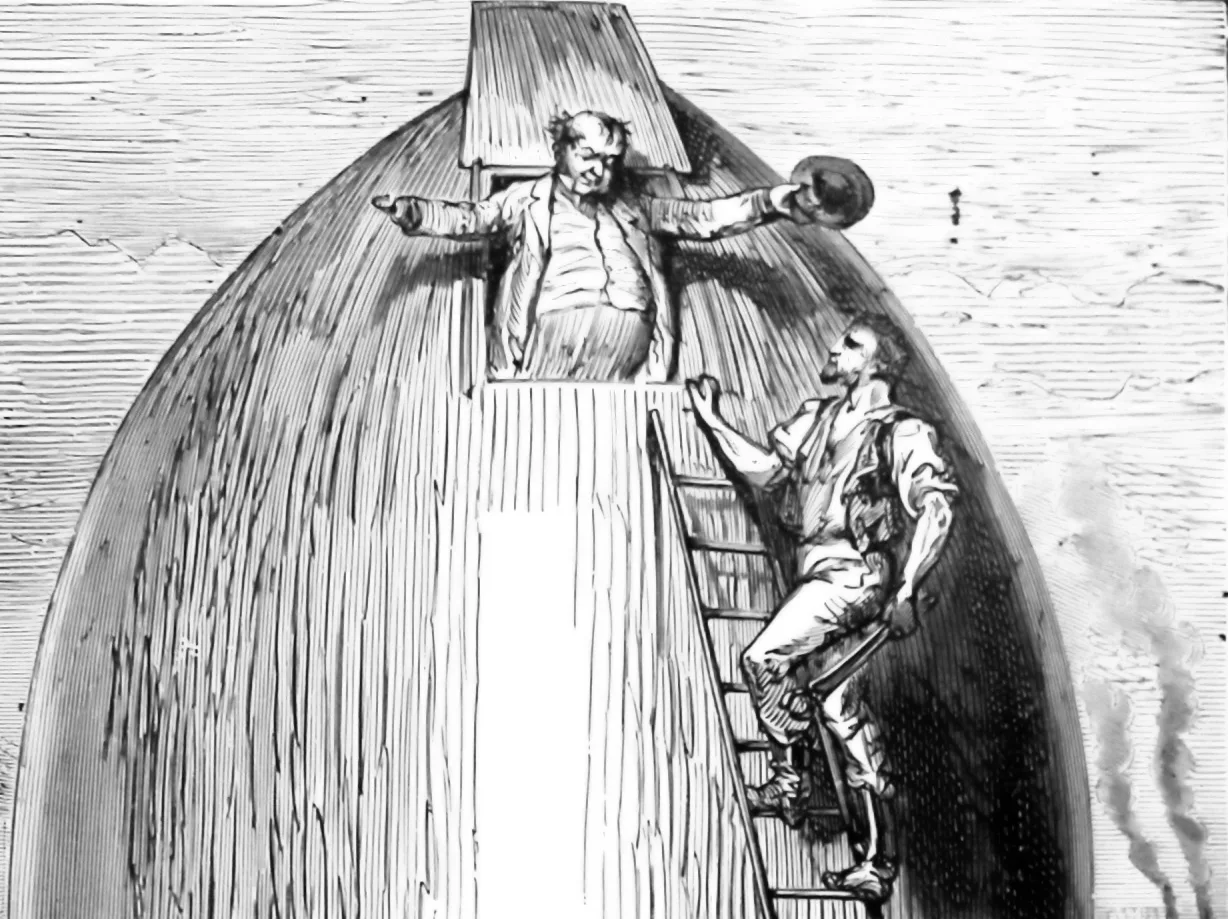Good day, space enthusiasts and fiction lovers! Today, we embark on a journey to 1865, where we’ll dissect Jules Verne’s visionary novel “From the Earth to the Moon.” Fasten your seat belts and don your space helmets as we set off!
To Infinity and Beyond (or at Least to the Moon)
Jules Verne, the prophetic science fiction writer of the 19th century, penned down a captivating narrative about a group of adventurers who aim to launch themselves to our luminescent satellite, the Moon. While Mr. Verne didn’t have the luxury of browsing through NASA’s website or binge-watching “The History of Space Exploration” on Netflix, he employed the scientific knowledge of his time and a whole lot of imagination to write this masterpiece.
When Verne Aimed for the Stars (or Moon) and Hit:
- Gun Club:
In the story, Verne’s Baltimore Gun Club takes the initiative to reach the Moon. Fast-forward to reality, and it’s interesting how many of the earliest advocates for space exploration, like Dr. Robert Goddard, were indeed experts in ballistics and rocketry. Score one for Verne! - Size of the Rocket:
Verne’s rocket, the Columbiad, is huge, at several times the size of the Apollo Saturn V. In reality, to escape Earth’s gravity, you really do need a gigantic rocket! - Florida Launch:
Verne astutely predicted that the U.S. would launch its lunar rocket from Tampa, Florida. In reality, NASA’s moon missions launched from Kennedy Space Center on Merritt Island, near Cape Canaveral, Florida. Jules might’ve missed the mark by just a bit, but we’ll give him this one.
Houston, We Have Some Inaccuracies:
- Giant Cannon Approach:
Verne’s adventurers are shot into space using a huge cannon, but using a cannon to launch humans into space would turn them into jelly due to the immense and sudden acceleration. Modern rockets accelerate gradually, saving astronauts from becoming space preserves. - Life Support:
The novel doesn’t delve deep into the life support systems that would be necessary for space travel. Our modern understanding emphasizes the importance of oxygen, water recycling, and waste management, among other things. - Moon’s Surface:
Verne predicted the lunar surface to be soft and sandy. But ask Neil Armstrong, and he’ll tell you (from archived interviews, of course) that the Moon’s surface is dusty and covered in a layer of fine soil called regolith, but beneath that, it’s quite solid. - Gravity-Assist Maneuvers:
In Verne’s story, the projectile directly flies to the Moon without any adjustments. Modern lunar missions use complex gravitational assist maneuvers, trajectory corrections, and insertion burns.
Moon Missions: Then & Now:
While Verne’s adventurers used a capsule with thick walls to survive in space, the Apollo missions used a combination of the command module and the lunar module, each designed for a specific task. Additionally, modern spacecraft use thrusters for course corrections, while Verne’s Columbiad was more of a “fire and forget” deal.
The return trip is another discrepancy. Verne’s team doesn’t particularly have a return plan. They’re on a one-way ticket to the Moon. Apollo astronauts, on the other hand, made sure to plant the flag, grab their moon rocks, and return home in time for dinner (or at least a celebratory meal).
So, What Have We Learned?
- Predicting the Future is Hard:
For all his visionary ideas, Verne couldn’t see every detail of the future. And can we blame him? Heck, even with all our technology, I still can’t predict tomorrow’s weather! - The Spirit of Adventure:
Whether it’s Verne’s fictional gun club or the real-life NASA, what drives us is the unyielding human spirit, the need to explore, and to go beyond our limits. - Details Matter:
The success of our moon missions wasn’t just because of a big rocket. It was due to countless hours spent by engineers, scientists, and astronauts on every tiny detail, ensuring everything went as planned.
In conclusion, “From the Earth to the Moon” remains an impressive feat of 19th-century imagination. Jules Verne might not have nailed all the technicalities, but he undoubtedly captured the essence of the adventure. As we celebrate his visionary work and chuckle at some of its inaccuracies, let’s remember that space, with all its mysteries, remains the final frontier, challenging us to explore, dream, and sometimes, write spellbinding tales.
You might be interested in exploring more about the fascinating world of space travel and its historical context. Speaking of visionary science fiction, you might want to read about Jules Verne and his contributions to literature, which paved the way for future advancements in space exploration. If you’re curious about the actual missions to the Moon, check out the details of the Apollo 11 mission, where astronauts took giant leaps for mankind. Additionally, understanding the lunar surface will give you a better perspective on the complexities and wonders our astronauts faced. Lastly, for a deeper dive into the technological innovations that made space travel possible, visit the article on spacecraft technology. These resources will enrich your knowledge and appreciation of both Verne’s literary foresight and the realities of space exploration!

